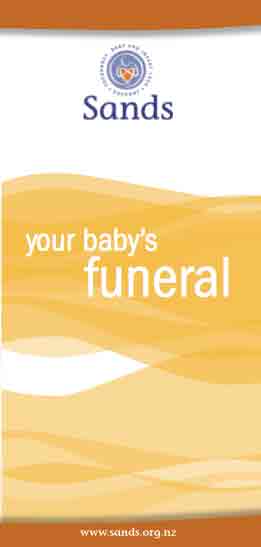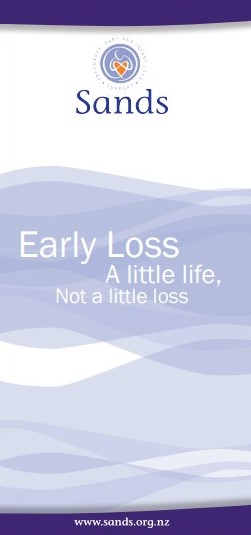Wishing everyone happy holidays and a joyful New Year from the Healthify team. Don't forget to Slip, Slop, Slap and Wrap!
Stillbirth
Key points about stillbirth
- Losing a baby after 20 weeks of pregnancy is called stillbirth.
- Not all the causes of stillbirth are known and it’s not possible to prevent every stillbirth.
- Certain factors may increase the risk of stillbirth and there are things you can do to reduce some of these risks.
- Seek help straight away by calling your midwife or doctor if your baby is not moving as much as usual or you have other signs of concern.
- There is support available to help you through the physical and emotional pain of losing a baby.

There is a lot still unknown about the causes of stillbirth. The following are possible causes:
- Congenital anomalies – problems that affect your baby’s physical development while it is in your uterus (womb). This may involve problems with chromosomes or vital organs such as the brain, kidney or heart.
- Placental problems – the most common of these is placental insufficiency, where the placenta does not provide the necessary nutrients and oxygen to your baby. Sometimes the placenta detaches from the wall of your uterus (called placental abruption) leading to stillbirth.
- Maternal conditions – these include underlying medical conditions such as diabetes, high blood pressure, autoimmune diseases and connective tissue disorders.
- Infection in your baby or placenta.
If you notice any of the following, get help straight away by calling your midwife or doctor. Do not wait until the next day – contact them now.
- Your baby is not moving as much as usual – a reduction in a baby’s movements can be an important warning sign that a baby is unwell.
- You bleed from your vagina – this could be a sign of a problem with the placenta, cervical changes or an infection.
- You have vaginal discharge that is not normal for you – watery, clear or coloured discharge from your vagina could be your waters breaking or a sign of infection.
- You get blurred vision, severe headache or swelling – these could be signs of pre-eclampsia.
- You have itching, particularly of your hands and feet – this could be a sign of a rare liver condition known as cholestasis of pregnancy.
A baby who has died in your womb (in utero) must still be born. Your doctor will discuss your options with you. Caesarean deliveries are not usually recommended, and as most stillbirth labours need to be induced, many women opt for a vaginal birth using pain relief.
After you have given birth to your stillborn, your doctor will recommend several blood tests and offer a post mortem to try to find a reason for the loss. A consultation may be arranged with an obstetrician about 2 months after the birth to discuss any diagnosis and to make any recommendations for a future pregnancy. You will be offered close monitoring in a future pregnancy.
As well as taking care of these physical aspects, you need to give yourself time to grieve the loss of your baby and the hopes and dreams you had for them. There is no ‘normal’ way to grieve. How ever you are feeling is okay. Read more about things that may help after the loss of a pregnancy and grief and loss.
Having a funeral for your baby is a way of recognising their life, however short. A formal goodbye helps you to accept that someone you love has died.
Legal requirements
- If your baby dies before 20 weeks of pregnancy (miscarriage) and weighs less than 400 grams, there is no legal requirement to register your baby's birth or to bury them. You are still welcome to hold a funeral.
- If your baby was stillborn after 20 weeks of pregnancy, and/or weighing more than 400 grams (if the dates are uncertain), there is a legal requirement to have their birth registered and to be buried or cremated in an appropriate manner. The death is not registered, but a medical certificate is completed at the hospital. A birth certificate is available to you on request from any Registrar of Births and Deaths.
- If your baby dies after birth up to 28 days of age (neonatal death) you are required to register your baby's birth and your baby must have a burial or cremation. Your baby's death will be registered (usually by a funeral director). A birth and death certificate can be issued on request.
You have to register your baby's birth within 2 months of the birth date.
You can register a birth and apply for a birth certificate online(external link) or by sending a form to the Registrar of births, deaths and marriages(external link). Your midwife or nurse will advise you of the steps that need to take place.
Not all the causes of stillbirth are known and it’s not possible to prevent every stillbirth. However, certain factors can increase your risk and there are things you can do to reduce some of these risks.
1. Go to all your antenatal appointments
Your LMC midwife or doctor will regularly measure your baby’s growth during your pregnancy, to check that your baby is growing at a healthy rate. Some of the tests and measurements that can identify potential problems have to be done at specific times. Read more about pregnancy screening tests and checks.
2. Get to know the pattern of your baby’s movements
There is no set number of normal movements. Get to know your baby’s movements and what is normal for them. A reduction or a sudden increase in a baby's movements can sometimes be an important warning sign that a baby is unwell. If you are concerned about a change in your baby’s movements, contact your midwife or doctor immediately. You are not wasting their time.
3. Sleep on your side
Research shows that going to sleep on your side from 28 weeks of pregnancy halves your risk of stillbirth compared with going to sleep on your back. Lying on your back in the last 3 months of pregnancy presses on major blood vessels, which can reduce blood flow to the womb and oxygen supply to the baby.
4. If you smoke, quit
Smoking in pregnancy has an immediate negative effect on your baby. Carbon monoxide replaces some of the oxygen in your blood and nicotine also reduces the flow of blood through the umbilical cord. Quitting at any time during pregnancy reduces the harm to your baby. However, planning to quit as early as you can means a better start in life for your baby. Ask your healthcare professional about advice and support on how to stop smoking and available services to support quitting.
5. Eat healthily and keep active
Eating a healthy balanced diet and getting regular exercise is important for you and your baby. Putting on weight is natural and will help you breastfeed well, but being overweight or obese can increase the risk of problems in pregnancy.
Read more about eating, drinking and watching your weight during pregnancy.
6. Avoid alcohol in pregnancy
The safest way to ensure your baby isn't damaged by alcohol is not to drink while you're pregnant.
Read more about alcohol and pregnancy.
If you need support or advice, get in touch with a bereavement service or talk to your midwife or doctor. Support services include:
- Whetūrangitia(external link) Information for family and whānau experiencing the death of a baby or child
- Stillbirth and Neonatal Death Support (Sands)(external link) Pregnancy, baby and infant loss support
- BabyLoss NZ website(external link) and BabyLoss NZ Facebook page(external link) for practical advice and information
- Skylight(external link) for counselling services
- Grief Centre(external link)
- Lifeline(external link)
- Still Aware(external link)
Read more about pregnancy health and wellbeing
Your baby's movements(external link) Kicks Count, UK
Why do baby's movements matter?(external link) Still Aware, Australia
Sleep on side when baby's inside(external link) Cure Kids, NZ
Apps
Pregnancy, baby care and parenting apps
Mental health and wellbeing apps
Resources
Quit smoking for baby(external link) Quitline, Australia
Sleep on side when baby's inside, Cure Kids, NZ, 2018. Available in the following languages: English(external link), te reo Māori(external link), Samoan(external link), Tongan(external link), Hindi(external link)
Feeling your baby move is a sign that they are well(external link) NHS, UK, 2020
The next few days(external link) Sands New Zealand, 2011
Transporting your baby – guidelines for parents, family and whānau(external link) Sands New Zealand, 2011
Your baby’s funeral(external link) Sands New Zealand, 2011
When a baby brother or sister dies(external link) HealthEd, NZ, 2022
Early loss – a little life, not a little loss(external link) Sands, NZ
Fathers grieve too(external link) HealthEd, NZ, 2023
Loss of a grandchild(external link) HealthEd, NZ, 2022
Safer Baby Bundle
The Safer Baby Bundle (SSB) is a collection of evidence-based change ideas or interventions designed to reduce late-pregnancy stillbirth. It was developed for Australian maternity healthcare professionals in partnership with the Perinatal Society of Australia and New Zealand (PSANZ). Development of the SBB has drawn from the expertise and experience of international advisors from the UK's Saving babies lives bundle of care.(external link)
A Safer baby bundle handbook and resource guide(external link) has been created as an informational support to assist maternity healthcare professionals with implementation of the bundle. Free and accredited CPD training for healthcare professionals is available from their e-learning modules(external link).
Other clinical resources
International Stillbirth Alliance(external link) US
Apps
Pregnancy, baby care and parenting apps
Mental health and wellbeing apps
Brochures

Sands New Zealand, 2011

HealthEd, NZ, 2022
Credits: Healthify editorial team. Healthify is brought to you by Health Navigator Charitable Trust.
Reviewed by: Dr Alice Miller, FRNZCGP
Last reviewed:
Page last updated:






